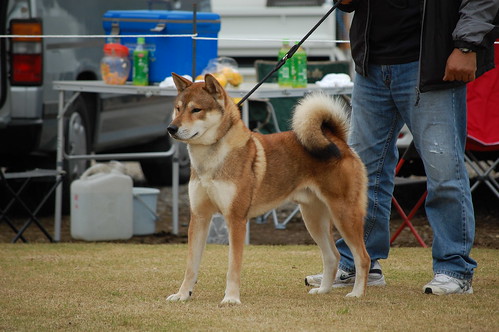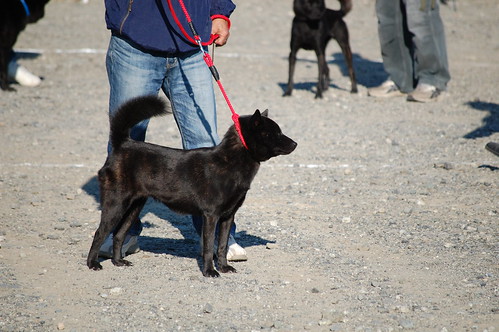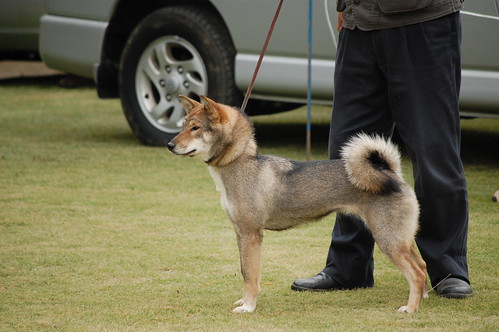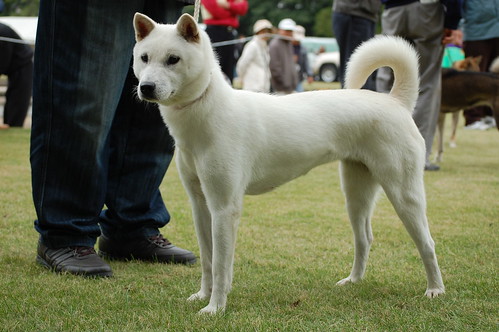NK Tails
There are two tail types in the NK, maki-o (curl tail) and sashi-o (sickle or pointed tail). The basic rule of thumb is that if the tip of the tail touches or curls over below the line of the back, it is a maki-o. If it does not, then it is a sashi-o.
All tails should be held up strongly. In the maki-o the tail should be held up over the back, with a space present between the line of the back, and the body of the tail so that you can actually 'see through' to the other side. A space the size of at least a ping pong ball is what I've heard as preferable. Tails may fall to either the right or left side of the body.


A sashi-o should be held up strongly. There is variation in the angle the tail is held at, but it should be held at an angle at least slightly forward from the end of the dog's body.


Tails should be full and thick with proper coloration. In NIPPO most of the breeds have maki-o, and sickle type tails are rare, but the majority of Kai have sashi-o, and most KKA breeders prefer the sickle type. In some breeds such as the Shikoku a large number do not have the spacing between tail and body, with the tail almost resting on the back. The Kishu seems to have stronger tails held up to give the proper spacing.


All tails should be held up strongly. In the maki-o the tail should be held up over the back, with a space present between the line of the back, and the body of the tail so that you can actually 'see through' to the other side. A space the size of at least a ping pong ball is what I've heard as preferable. Tails may fall to either the right or left side of the body.


A sashi-o should be held up strongly. There is variation in the angle the tail is held at, but it should be held at an angle at least slightly forward from the end of the dog's body.


Tails should be full and thick with proper coloration. In NIPPO most of the breeds have maki-o, and sickle type tails are rare, but the majority of Kai have sashi-o, and most KKA breeders prefer the sickle type. In some breeds such as the Shikoku a large number do not have the spacing between tail and body, with the tail almost resting on the back. The Kishu seems to have stronger tails held up to give the proper spacing.




Comments